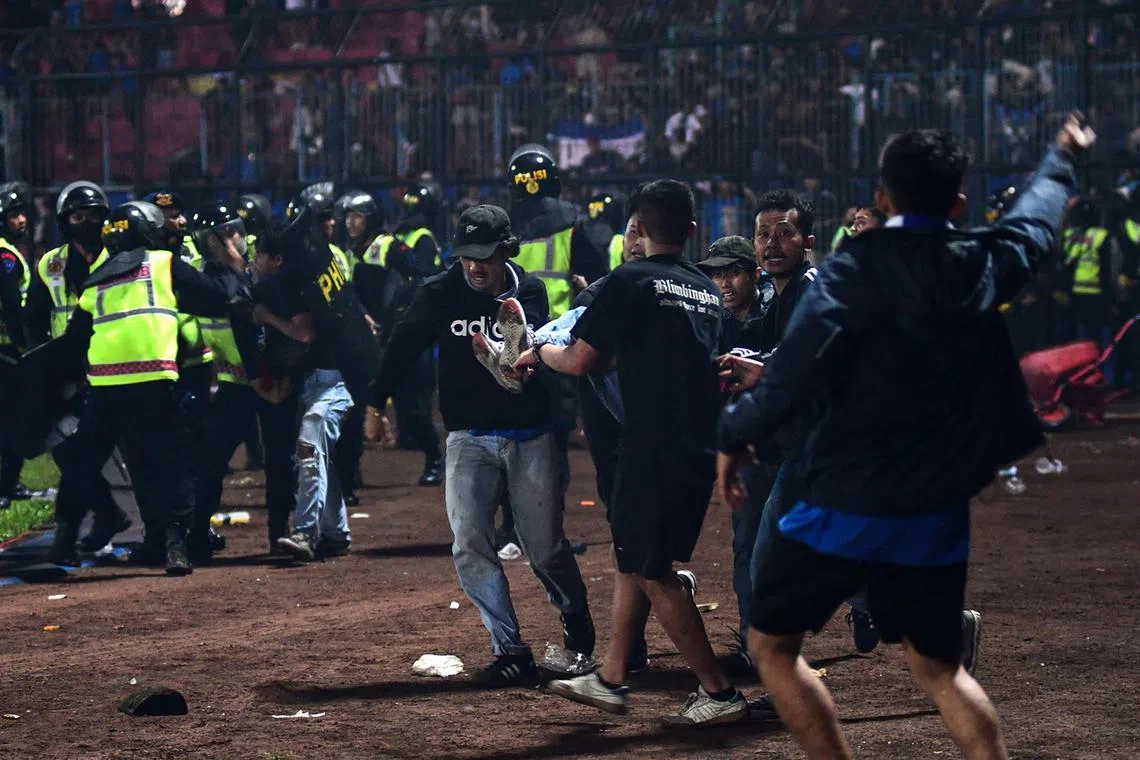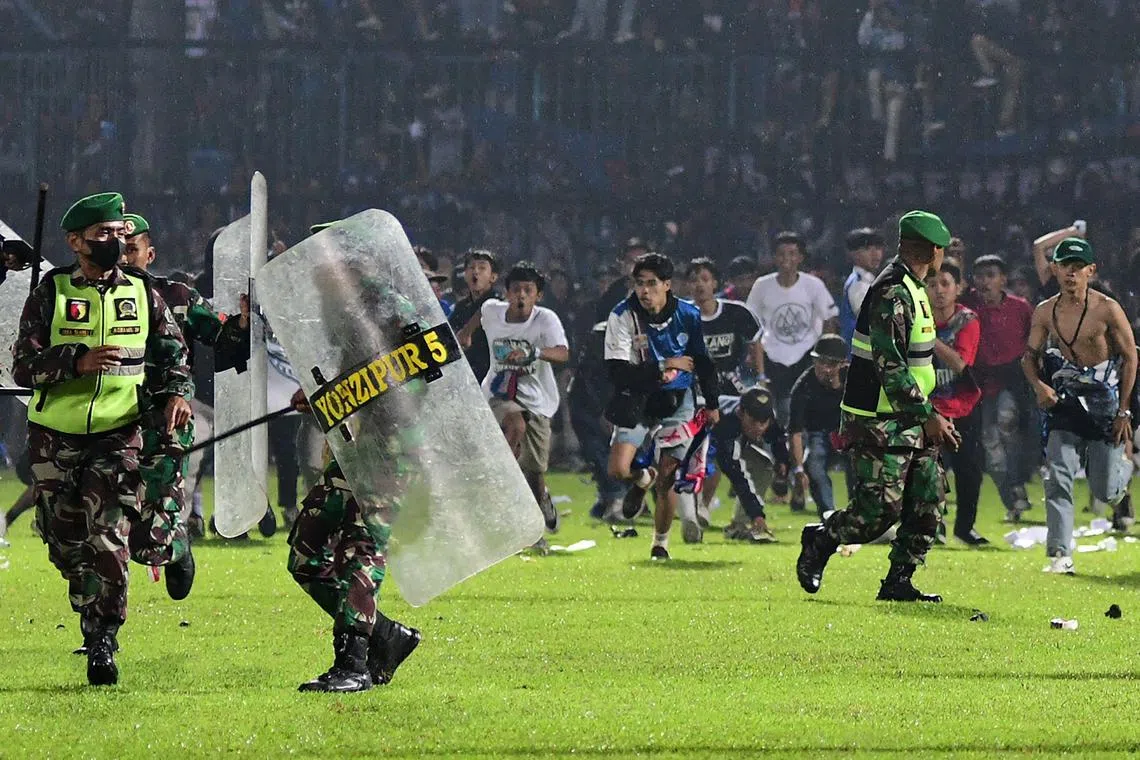‘Long way to go’ for Indonesian football safety a year after deadly stampede
Sign up now: Get ST's newsletters delivered to your inbox

The Indonesian stadium where 135 people died in Oct 2022 is one of football's worst tragedies.
PHOTO: AFP
Follow topic:
Jakarta – The Kanjuruhan Stadium in Malang, Indonesia where 125 people died in 2022 in one of football’s worst tragedies
It serves as a reminder of how little has changed since football fans were trampled or suffocated to death – including 323 injured – in the Oct 1 stampede sparked by a pitch invasion.
“There is no political will from the government or (Indonesian football association) PSSI to improve itself,” said sports columnist Anton Sanjoyo, who served on the investigating task force created after the tragedy.
Indonesian officials had been urged to confront failings in the domestic game – blighted for years by shaky infrastructure, mismanagement and violence.
The task force Sanjoyo served on also called for the head of PSSI and all members of its executive committee to resign. Instead, in the weeks after the disaster, pictures emerged of PSSI chief Mochamad Iriawan high-fiving and playing football with Fifa president Gianni Infantino.
Iriawan refused to stand down and saw out his term.
Fifa, meanwhile, pledged to pump money into the PSSI and Indonesia’s Under-23 team went on to win the gold at the May SEA Games for the first time in 32 years.
New PSSI president Erick Thohir hailed the win, declaring a new chapter for Indonesian football.
But others, including prominent pundit Pangeran Siahaan, disagree.
“I believe that we’ve made progress, but I don’t think it’s enough,” he said.
“We still have a long way to go.”

Soccer fans enter the pitch as military personnel try to stop them during a riot following a match at Kanjuruhan Stadium in Malang, Indonesia, on Oct 1, 2022.
PHOTO: AFP
Indonesia President Joko Widodo’s orders for a nationwide stadium audit after the disaster led to improvements at just a few facilities, pundits say – the four that are set to host the Fifa U-17 World Cup in November.
“The security conditions of stadiums as desired by Fifa are still far from expectations, especially in stadiums that are not prepared for the U-17 World Cup,” added Sanjoyo.
But the PSSI insisted that safety improvements are ongoing, including the renovation of 22 stadiums along with the introduction of CCTV and new crowd-control measures.
It also claimed that it is training match organisers to meet the world body’s standards.

The site of last year’s deadly stampede, East Java’s Kanjuruhan Stadium, was earmarked for demolition, but workers have only disassembled kiosks and stalls around its grounds.
PHOTO: AFP
Apart from the stadiums, fan violence has still broken out despite the fact that away fans were banned from many games after the stampede, for fears of fights.
Police used tear gas in February against fans trying to enter the gates of a match where supporters were not allowed, but no punishment was given as the authorities claimed it took place outside the stadium.
No one was injured but the incident prompted fears of a repeat tragedy.
“I can only hope that the victims are always remembered and it will be a trigger for the sports climate to be a better one,” said pundit and former Indonesian futsal head coach Justinus Lhaksana.
“Don’t let them die in vain.” AFP

